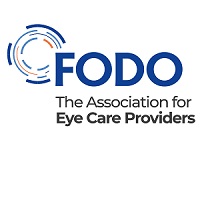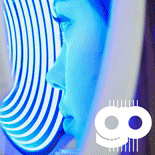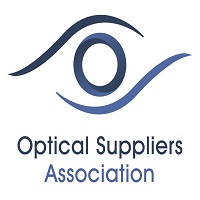Few things are more refreshing and energizing than a good night’s sleep, but that can be elusive for many people who are blind or visually impaired. Do you find it difficult to wind down when it’s time to go to bed? Do you find yourself wanting to sleep during the day? Is it hard to concentrate during waking hours? Do you feel foggy, restless, overtired, or frustrated when you are awake?
Many people who are blind or visually impaired have difficulty sleeping. Currently, about 1 million Americans are legally blind (with corrected vision of 20/200 or worse) – a figure that may double by 2050. Among those, approximately 10% are totally blind, with no light perception at all. And as many as 70% report having trouble sleeping at night as well as trouble staying awake and functional during waking hours.
The main cause of sleep problems in blind and visually impaired people seems to be a disruption in circadian rhythm. This rhythm serves humans as an “internal body clock,” regulating the daily cycle of biological processes such as hormone production and sleep. These processes repeat daily on a cycle that’s close to (but not exactly) 24 hours, synchronized by environmental time cues. Photoreception, or the perception of light, is a primary cue that helps reset a person’s circadian rhythm.
For a person who is totally blind, the inability to perceive light can sometimes prevent the internal body clock from synchronizing and regulating bodily processes on a standard 24-hour day-night cycle. The absence of this major environmental cue can cause a disruption in the circadian rhythm, resulting in inconsistent sleep patterns — usually fluctuating periods of healthy sleep punctuated by periods of poor sleep, and excessive daytime sleepiness. Inconsistent and inadequate sleep can wreak a number of ill effects on a person’s physical and mental functions during both sleeping and waking hours.
This guide is designed to help you understand the human body’s circadian rhythm and how it can be disrupted in blind people, most commonly via a syndrome called “non-24 sleep-wake disorder.” The guide also provides resources to help blind people explore the options for adjusting to and treating their symptoms, as well as for discussing symptoms with others and examining how the effects can be addressed and accommodated.
Visual Impairment and Sleep Disorders
Sleepiness due to eye strain
It can be common for even-sighted people with minor visual impairments to experience inconvenient bouts of daytime sleepiness due to eye strain. Excessive use of a computer or digital device, driving or reading for long periods, straining to see in dim light, or coping with outdated prescriptions for eyeglasses or contact lenses can all lead to eye strain. Usually, it isn’t serious, and can be relieved by stopping the activity causing the strain and closing the eyes to rest them (this is where the sleepiness comes in, as the body tries to rest the eyes).
Poor sleep quality, interrupted sleep, and short sleep duration
Several international studies published by the National Institutes of Health have found links between visual impairment and poor sleep quality or extremes in sleep duration (in which sleep lasts for excessively short or long periods). The results of one such NIH study indicated that individuals with low vision or visual impairment experienced a high incidence of poor sleep quality, short sleep duration, and sleep apnea (which causes sleep fragmentation or interruptions). For older adults with some light perception, it was found that bright light treatment can be effective in treating insomnia.
In the section below, we recommend tips for addressing and alleviating these types of sleep disruptions, titled Living With and Managing Circadian Rhythm Disorders. Look for answers to the questions “How do I deal with fatigue?” and “How can I improve my chances of getting decent sleep?”
Sleep apnea
Sleep apnea is a condition in which a person’s breathing stops during sleep, sometimes for dangerously long periods of time. Since it occurs during sleep, you may experience apnea without knowing it. Symptoms include:
- Loud snoring (reported by another person)
- Episodes in which you stop breathing during sleep (reported by another person)
- Gasping for air during sleep
- Awakening with a dry mouth
- Morning headache
- Insomnia or difficulty staying asleep
- Hypersomnia or excessive daytime sleepiness
- Difficulty paying attention while awake
- Irritability
During an episode of sleep apnea, the musculature of the airway relaxes excessively during sleep, and the intake of breath pulls in the walls of the relaxed airway, narrowing or obstructing it. This causes an interruption in breathing, which in some sleepers can happen up to 100 times an hour. As a result, the body is intermittently deprived of oxygen, potentially leading to a host of respiratory, circulatory, and neurological problems.
Certain visual conditions have been associated with sleep apnea, according to a 2013 clinical study by the American Academy of Ophthalmology. The study noted links between the detrimental circulatory impact of sleep apnea and several ocular and retinal disorders. Essentially, the oxygen deprivation that results from sleep apnea can damage the circulatory system, creating the perfect conditions for papilledema, glaucoma, floppy eyelid syndrome, optic neuritis, chorioretinopathy, or one of several other diseases of the eye.
A doctor interviewed for the American Academy of Ophthalmology study suggested that, if you have symptoms of any of these conditions, you should get an ophthalmic exam immediately, and undergo a sleep study if necessary. An exam can not only detect the circulatory signs in the eyes early enough to determine if the underlying cause is sleep apnea, but it can also head off related conditions such as coronary artery disease.
How Circadian Rhythms Affect Sleep
Another major cause of sleep problems in blind and visually impaired people is a disruption in the circadian system. Inside the human brain, the hypothalamus creates an internal “pacemaker” of sorts, generating the circadian rhythms that influence the body’s daily physiological processes, majorly impacting overall health, behavior, and well-being. These processes include the sleep-wake cycle and regulation of daily hormone levels.
If a person’s circadian rhythms are out of sync, hormones can be released at the wrong time of day, causing difficulty sleeping at night and a corresponding urge to sleep during the day. The resulting sleep deprivation may affect alertness, cognitive functioning, and mental performance, making it hard to focus on even simple tasks.
The issue is a slightly complicated matter of cycles. A human’s natural timing mechanism, the “body clock,” runs a little longer than 24 hours for most people, whether sighted or blind. The length of time that each person’s cycle differs from the standard 24-hour period may be a few minutes or much longer (for reasons that are still unknown). In people with properly functioning circadian rhythms, this difference is regulated daily, corrected to synchronize back to a standard 24-hour cycle, helping facilitate sleep at night and wakefulness during the daytime.
For most people, this is how circadian rhythms work to keep their body clocks on track: circadian rhythms, which control the body’s ebb and flow of sleep and wakefulness, are themselves influenced by cues from the environment surrounding a person. One main cue is light. Photoreceptors in the eyes’ retinas receive light cues from the environment; then, the eyes signal the brain what time of day it is — day, night, or in between.
The brain’s hypothalamus uses this information to regulate the person’s natural rhythms, synchronizing them internally as well as externally in relation to the environment, and correcting the non-24-hour body clock to the typical day-night schedule. Much the same as resetting the hands on a clock, this reset is the circadian rhythm’s way of syncing the body’s processes to the 24-hour cycle upon which most people operate.
For more information about circadian rhythms and their effect on sleep, visit:






















